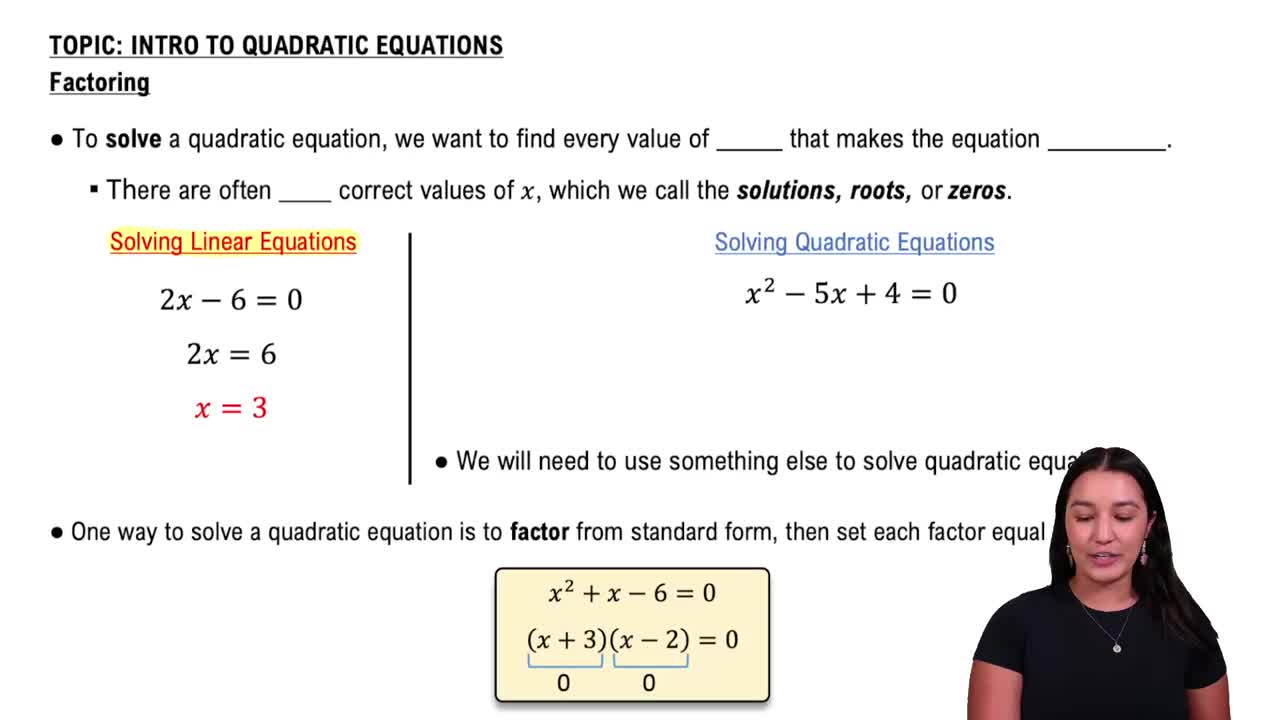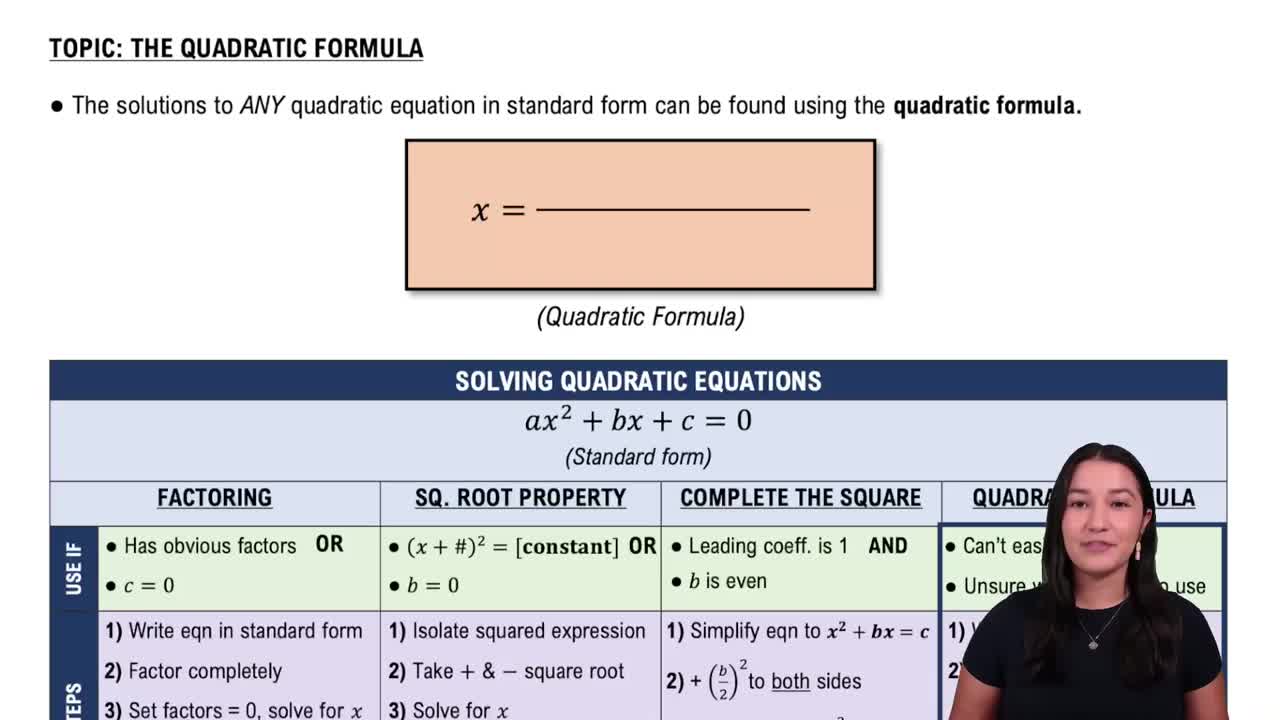Table of contents
- 0. Review of Algebra4h 16m
- 1. Equations & Inequalities3h 18m
- 2. Graphs of Equations43m
- 3. Functions2h 17m
- 4. Polynomial Functions1h 44m
- 5. Rational Functions1h 23m
- 6. Exponential & Logarithmic Functions2h 28m
- 7. Systems of Equations & Matrices4h 6m
- 8. Conic Sections2h 23m
- 9. Sequences, Series, & Induction1h 19m
- 10. Combinatorics & Probability1h 45m
1. Equations & Inequalities
Intro to Quadratic Equations
Problem 5
Textbook Question
Solve each equation in Exercises 1 - 14 by factoring. 6x^2 + 11x - 10 = 0
 Verified step by step guidance
Verified step by step guidance1
<Step 1: Identify the quadratic equation in standard form. The given equation is already in the form \( ax^2 + bx + c = 0 \), where \( a = 6 \), \( b = 11 \), and \( c = -10 \).>
<Step 2: Look for two numbers that multiply to \( a \times c = 6 \times (-10) = -60 \) and add up to \( b = 11 \).>
<Step 3: The numbers that satisfy these conditions are 15 and -4, because \( 15 \times (-4) = -60 \) and \( 15 + (-4) = 11 \).>
<Step 4: Rewrite the middle term \( 11x \) using the numbers found: \( 6x^2 + 15x - 4x - 10 = 0 \).>
<Step 5: Factor by grouping. Group the terms: \((6x^2 + 15x) + (-4x - 10) = 0\). Factor out the greatest common factor from each group: \(3x(2x + 5) - 2(2x + 5) = 0\). Notice that \((2x + 5)\) is a common factor, so factor it out: \((3x - 2)(2x + 5) = 0\).>
Recommended similar problem, with video answer:
 Verified Solution
Verified SolutionThis video solution was recommended by our tutors as helpful for the problem above
Video duration:
6mPlay a video:
Was this helpful?
Key Concepts
Here are the essential concepts you must grasp in order to answer the question correctly.
Factoring Quadratic Equations
Factoring quadratic equations involves rewriting the equation in the form of a product of two binomials. This process helps to find the roots of the equation by setting each factor equal to zero. For example, the equation ax^2 + bx + c can often be expressed as (px + q)(rx + s) = 0, where p, q, r, and s are constants.
Recommended video:

Solving Quadratic Equations by Factoring
Zero Product Property
The Zero Product Property states that if the product of two factors equals zero, then at least one of the factors must be zero. This principle is crucial when solving factored equations, as it allows us to set each factor to zero and solve for the variable. For instance, if (x - 2)(x + 3) = 0, then either x - 2 = 0 or x + 3 = 0.
Recommended video:

Product, Quotient, and Power Rules of Logs
Quadratic Formula
The Quadratic Formula provides a method for finding the roots of any quadratic equation in the standard form ax^2 + bx + c = 0. The formula is x = (-b ± √(b² - 4ac)) / (2a). While factoring is often preferred for simpler equations, the quadratic formula is a reliable alternative when factoring is difficult or impossible.
Recommended video:

Solving Quadratic Equations Using The Quadratic Formula

 5:35m
5:35mWatch next
Master Introduction to Quadratic Equations with a bite sized video explanation from Callie
Start learningRelated Videos
Related Practice










